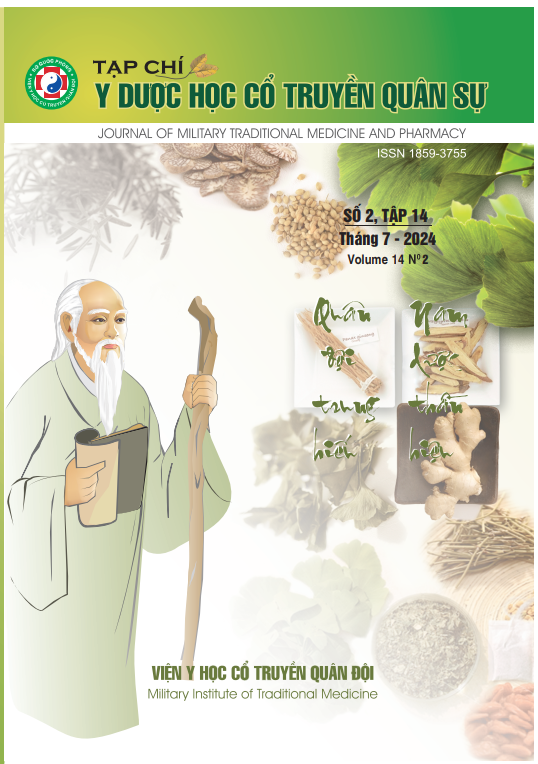NGHIÊN CỨU TÁC DỤNG ĐIỀU TRỊ LOÉT DO TỲ ĐÈ CỦA MỠ SINH CƠ TRÊN ĐỘNG VẬT THỰC NGHIỆM
Main Article Content
Abstract
Objective: to evaluate the effects of “Mỡ sinh cơ” for treating pressure ulcers on experimental animals. Subjects and Methods: a experimental study, progressive follow-up studywith control group on 80 adults white rats were established pressure ulcers model. The rats were divided into 4 groups (1 model lot, 1 control lot, 2 study lot). The study was conducted at Military Institute of Traditional Medicine. Results: The treated ulcers with “Mỡ sinh cơ” shrinked size faster than control group (p<0,05). “Mỡ sinh cơ” had effects in ulcers treatment, showed in better evaluation point of all indicators than control group: about depth: on day 21, study lot 1 and study lot 2: 0,7 ± 0,66; in control group using only NaCl 0,9% and control group using Silvirin oitment: 0,45 ± 0,51 and 0,5 ± 0,61, respectively (p<0,05). About size: rate of wound narrowing in the study group was faster than the control group. The recovery rate in 2 lots were treated with “Mỡ sinh cơ” higher than control group. Conclusion: “Mỡ sinh cơ” had effectsfor treating pressure ulcers on experimental animals.
Article Details
Keywords
Mỡ sinh cơ, pressure ulcers, experimental animals.
References
2. Alice King, Swathi Balaji, Sundeep G. Keswani, at al (2014), "The Role of Stem Cells in Wound Angiogenesis," Advances in Wound Care, vol. 3, no. 10, pp. 614–625.
3. Li B., Li F.L., Zhao K.Q. (2010), “Investigation of connective mathematics model on chronic cutaneous ulcer in traditional Chinese medicine syndrome differentiation”, Chinese Journal of Dermatovenerology of integrated Traditional and Western Medicine, 9 (1), pp.4-7.
4. Istvan Stadler, Ren-Yu Zhang, Phillip Oskoui, et al (2004), Development of a simple, Noninvasive, Clinically Relevant Model of Pressure Ulcers in the mouse. Journal of Investigative Surgery, 17, pp.221-227.
5. Sarah L. Swisher, Monica C. Lin, Amy Liao, Elisabeth J. Leeflang (2015), Impedance sensing device enables early detection of Pressure ulcers invivo. Nature Communications 6, Article number: 6575, doi: 10.1038/ncomms7575WalkerHL,MasonADJr (1968). Astandard animal J Trauma. Nov; 8(6), pp.1049-1051.
6. Sanada H., Moriguchi T., Miyachi Y., et al (2004), Reliability and validity of DESIGN, a tool that classifies pressure ulcer severity and monitors healing. J Wound Care, Jan, 13(1), pp.13-18.
7. Nguyễn Tiến Dũng, Nguyễn Ngọc Tuấn, Nguyễn Thị Vân Anh (2014), Đánh giá tác dụng điều trị của kem berberin 0,1% tại chỗ vết thương mạn tính. Tạp chí Y học thảm họa & bỏng, số 5, tr.67-78.
8. Staas W.E. Jr, Cioschi H.M. (1991), Pressure sores – a multifaceted approach to prevention and treatment. West J Med, 154 (5), pp.539-544.
9. José Fernadez Montequin, et al (2009), Intralesional administration of epidermal growth factor-based formulation (Heberprot P) in chronic diabetic foot ulcer: treatment up to complete wound closure. International wound journal,6 (Suppl.1), pp.67-72.


